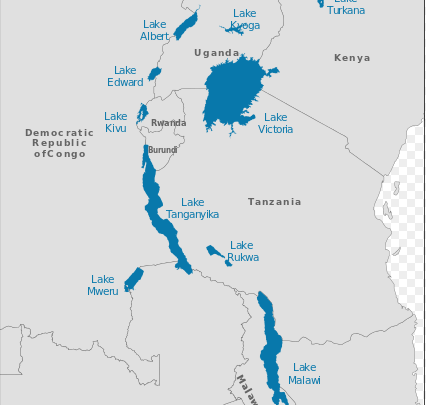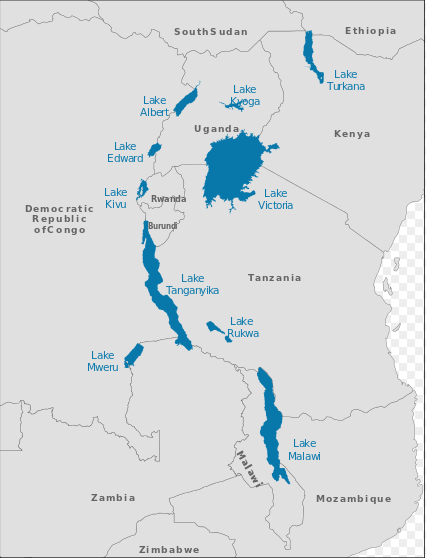
The African Great Lakes are a series of lakes in and around the Incomparable Rift Valley. They incorporate Lake Victoria, the second biggest fresh water lake on the planet and Lake Tanganyika, the world’s second biggest as far as volume as well as the second deepest. The African Great Lakes are:
Some call just Lake Victoria, Lake Albert, and Lake Edward the African Great Lakes as they are the main three that void into the White Nile.
Lake Tanganyika and Lake Kivu both void into the Congo River System, while Lake Malawi is depleted by the Shire Waterway into the Zambezi.
Also Read: Lake in Malawi: The lake with the the greatest number of fish species on Earth

The African Great Lakes Region
The African Great Lakes likewise refers to the locale around these lakes.
These incorporate the total of the countries of Rwanda, Burundi, and Uganda as well as bits of the Republic of the Congo, Tanzania, and Kenya.
It is one of the most thickly populated regions of the world, with an expected 107 million individuals living in the African Great Lakes area.
On account of past volcanic action, this piece of Africa contains a portion of the world’s best farmland.
As a result of the density of the populace and the agricultural excess in the locale, the region turned out to be profoundly coordinated into various little states.
The most powerful of these governments were Rwanda, Burundi, Buganda, and Bunyoro.
Also Read: Lake Natron In Tanzania’ The Medusa Water that turns Animals into Stone
Arrival of Europeans in the Region
Abnormally for sub-Saharan Africa, the customary boundaries were to a great extent kept up with by the provincial powers.
Being the long-pursued source of the Nile, the district had for some time been important to Europeans.
The main Europeans to show up in the district in any numbers were preachers who had limited success in converting the locals but opened the area to later colonization.
The increased contact with the rest of the world led to a series of devastating epidemics affecting both humans and livestock.
These diminished the locale’s populace decisively, by up to 60% in certain areas. The locale didn’t get back to its precolonial populace until the 1950s.
While seen as a locale with great potential after independence, the district has lately been damaged by nationwide conflict and colossal violence, leaving the locale in incredible poverty from which just Kenya and Tanzania are to a great extent excluded.





